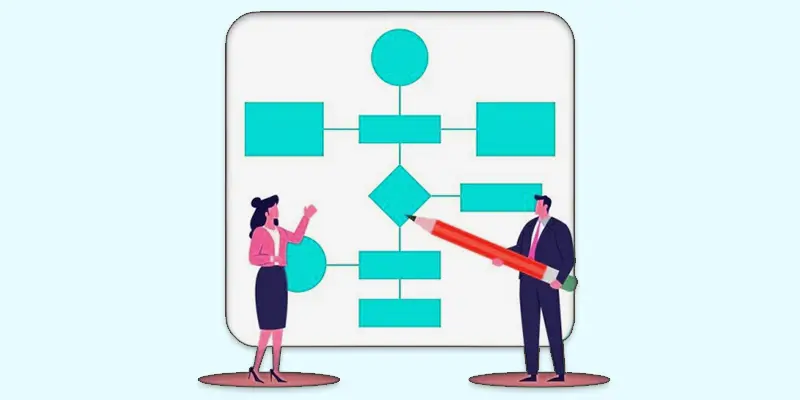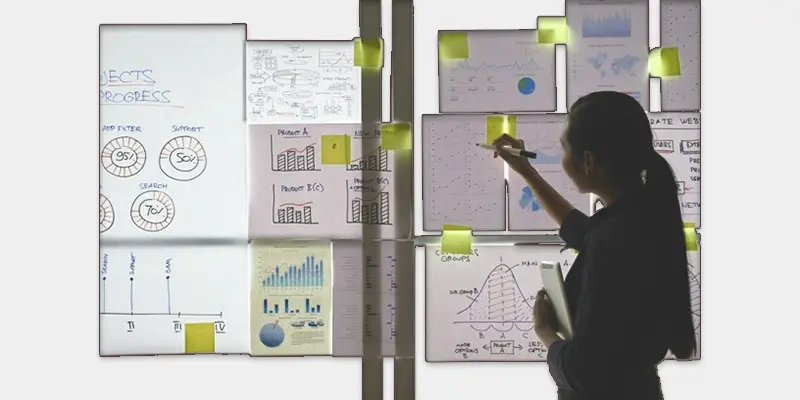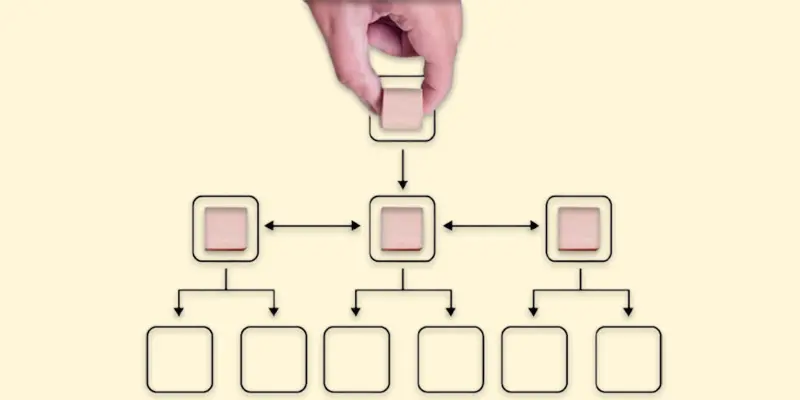Easy Guide to Hierarchical Task Analysis Steps, Benefits & Applications
Published: 11 May 2025
Hierarchical Task Analysis
Hierarchical Task Analysis (HTA) is a method used to reduce difficult activities into smaller, manageable chunks, helping in system design, training, and workflow optimization. Many people struggle with performing tasks efficiently but don’t realize the issue lies in how they approach them—have you ever felt stuck trying to complete a task in the right order? The problem often comes from unclear steps, making processes harder than they should be. Imagine trying to assemble furniture without clear instructions—HTA works like a step-by-step guide, ensuring every action is structured for better results.
Understanding Hierarchical Task Analysis
A technique called Hierarchical Task Analysis (HTA) divides difficult jobs into smaller, more manageable steps, which facilitates comprehension and execution of procedures. It was developed in the 1960s as part of human factors research to improve task efficiency and reduce errors.

Key Components of HTA
- Main Task – The overall goal to be achieved.
- Subtasks – Smaller actions that contribute to completing the main task.
- Plans – Rules that define how and when subtasks are performed.
How HTA Works
- Identify the main task (e.g., “Booking a flight online”).
- Break it down into subtasks (e.g., selecting a destination, choosing a date, making a payment).
- Define the sequence in which these subtasks should be completed.
- Optimize by removing unnecessary steps or improving the process.
Steps to Perform Hierarchical Task Analysis
A systematic approach to decomposing a complicated work into more manageable, structured components is called Hierarchical work Analysis (HTA). This makes it easier to understand, perform, and improve the process. Follow these steps to conduct an effective HTA
Identify the Main Task
- Define the overall goal you want to achieve.
- Example: Using an ATM to withdraw money.
Break the Task into Subtasks
Divide the main task into smaller, logical steps
- Put the ATM card in
- Put in your PIN
- Choose the withdrawal option
- Decide how much
- Collect cash
- Remove the card
Define the Sequence of Actions (Plans)
- Arrange subtasks in the correct order.
- Identify any dependencies (e.g., you must insert the card before entering the PIN).
Analyze and Optimize the Process
- Remove unnecessary steps to improve efficiency.
- Look for potential errors or challenges (e.g., entering the wrong PIN).
Applications of HTA in Different Fields
Hierarchical Task Analysis (HTA) is useful in many areas to improve efficiency, reduce errors, and make tasks easier to follow. It helps break down complex processes into simple steps, making them more manageable.
Interaction between humans and computers (HCI)
In Interaction between humans and computers (HCI), HTA helps designers create software and websites that are easy to use. It ensures that users can complete tasks smoothly without confusion. For example, it is used to design an online banking app that guides users step by step.
Workplace Training & Job Analysis
In Workplace Training & Job Analysis, HTA makes it easier for employees to learn their tasks. It helps trainers explain job roles in a structured way. For example, a company can use HTA to teach customer service representatives how to handle complaints professionally.
Process Improvement & Workflow Optimization
In Process Improvement & Workflow Optimization, HTA helps businesses find and remove unnecessary steps in a process. This improves productivity and saves time. For example, a factory can use HTA to analyze and speed up the process of packaging products.

Healthcare & Medical Training
In Healthcare & Medical Training, HTA ensures medical tasks are done correctly and safely. It helps doctors and nurses follow step-by-step procedures. For example, HTA is used to train nurses on how to correctly prepare and give injections.
Aviation & Safety Procedures
In Aviation & Safety Procedures, HTA helps pilots and engineers follow important safety steps. It reduces the risk of mistakes in critical operations. For example, pilots use HTA-based checklists to ensure all systems are working before takeoff.
Benefits of Using HTA
Hierarchical Task Analysis (HTA) helps improve efficiency, reduce errors, and simplify complex tasks.
- Improves Task Clarity – HTA breaks tasks into clear steps, making them easier to understand.
Example: A step-by-step guide for assembling furniture helps avoid confusion.
- Enhances Training & Learning – It provides a structured way to teach new employees or trainees.
Example: A hospital uses HTA to train nurses on proper patient care procedures.
- Identifies Redundant Steps – HTA helps remove unnecessary actions, improving efficiency.
Example: A restaurant streamlines food preparation by eliminating extra movements in the kitchen.
- Reduces Errors – Following a structured plan minimizes mistakes in critical tasks.
Example: Pilots use HTA-based checklists to ensure they don’t miss any safety checks before takeoff.
- Improves System & Process Design – HTA helps create better workflows in software and businesses.
Example: An e-commerce website uses HTA to design an easy checkout process for customers.

Common Challenges in HTA and How to Overcome Them
Hierarchical Task Analysis (HTA) is useful, but it has some challenges.
Breaking Down Complex Tasks – Some tasks have too many details, making them hard to analyze.
- Solution: Start with main steps and add details gradually.
Time-Consuming Process – Analyzing every step in detail can take a lot of time.
- Solution: Focus on important steps and simplify where possible.
Missing Key Steps – Skipping an important step can make the analysis incomplete.
- Solution: Test the process and get feedback from experienced users.
Confusion in Task Order – Some tasks do not follow a fixed sequence, making it hard to arrange them.
- Solution: Use decision trees or flowcharts to manage different paths.
Resistance to Change – Employees may not accept new processes based on HTA.
- Solution: Provide training and explain how HTA improves efficiency.
Example of HTA in Real Life
Let’s take the example of using an ATM to withdraw cash. This process can be broken down step by step using Hierarchical Task Analysis (HTA).
Main Task: Withdraw Cash from an ATM
- Insert Card – The user inserts their debit or credit card into the machine.
- Enter PIN – The ATM asks for a PIN, and the user enters it correctly.
- Choose the Type of Transaction – The “Withdraw Cash” option is selected by the user.
- Select the Account and Amount – The user inputs the withdrawal amount and, if necessary, chooses an account.
- Confirm Transaction – The ATM displays a confirmation screen, and the user confirms.
- Collect Cash & Receipt – The ATM dispenses cash, and the user takes it along with the receipt.
- Remove Card – The machine ejects the card, and the user removes it safely.

Conclusion About Task Analysis
Hierarchical Task Analysis (HTA) is a powerful tool that simplifies complex tasks, improves efficiency, and reduces errors across different industries. Whether in healthcare, aviation, software design, or daily activities, HTA helps create structured and effective workflows. By understanding and applying HTA, individuals and businesses can enhance productivity and streamline processes.Keep exploring HTA! Every small step you break down brings you closer to mastering complex tasks with ease. Embrace the power of analysis, and you’ll find smarter ways to work, learn, and grow!
FAQS What is Hierarchical Task Analysis
A technique called Hierarchical activity Analysis (HTA) divides a difficult activity into smaller, more doable pieces. It helps in understanding how a task is performed step by step. This makes it easier to improve efficiency and reduce errors.
Yes! A common example is using an ATM to withdraw cash. The task is broken into steps like inserting the card, entering the PIN, selecting the amount, confirming the transaction, and collecting the money.
HTA is a structured approach that breaks a task into smaller actions to understand and improve its flow. It helps in identifying key steps and removing unnecessary ones. This method is widely used in training, system design, and process optimization.
A hierarchical structure of tasks organizes them from broad goals to detailed actions. It shows how smaller steps contribute to completing a larger task. This makes complex processes easier to follow and manage.
Hierarchical Task Analysis (HTA) focuses on breaking down tasks into physical steps. Cognitive Task Analysis (CTA) studies the mental processes needed to complete a task. While HTA looks at actions, CTA examines decision-making, memory, and problem-solving.
The main purpose of HTA is to break down tasks into smaller steps for better understanding and execution. It improves learning, reduces errors, and enhances efficiency. This makes complex tasks easier to manage.
In human factors, HTA is used to study how people interact with systems, tools, and environments. It helps in designing user-friendly products and improving workplace efficiency. This ensures tasks are performed safely and effectively.

- Be Respectful
- Stay Relevant
- Stay Positive
- True Feedback
- Encourage Discussion
- Avoid Spamming
- No Fake News
- Don't Copy-Paste
- No Personal Attacks

- Be Respectful
- Stay Relevant
- Stay Positive
- True Feedback
- Encourage Discussion
- Avoid Spamming
- No Fake News
- Don't Copy-Paste
- No Personal Attacks





